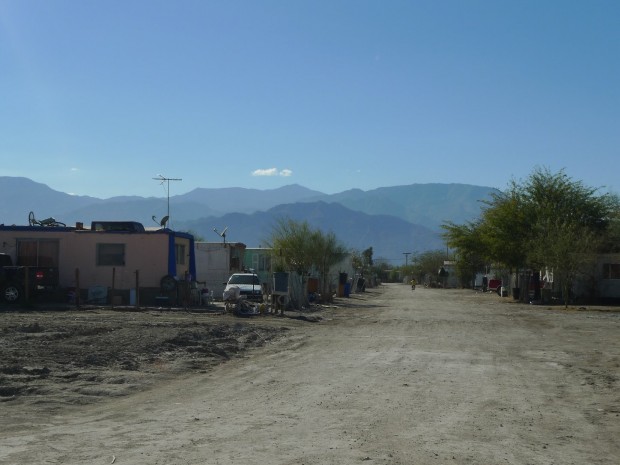The California Endowment tapped a team from U.C. Davis to collaborate with Eastern Coachella Valley community advocates to develop this report. Jonathan London, directs the U.C. Davis Center for Regional Change and led this study. He says his team met with community members who were struggling to find the best ways to gather data and to collaborate to drive change in the region. “We had the methods we’d developed doing a similar project in the San Joaquin Valley," London said, "so it was natural extension for us,” The study provides these community leaders with a shared playbook, “a common analysis of what the key issues are that would benefit from collective action,” which they can use in their advocacy with public agencies.
In rural, poor and marginalized areas, collecting data is challenging, London asserts. “Some of the publicly available data, like U.S. Census, is notoriously bad in rural communities,” often under-counting undocumented immigrants and migrant workers. “There’s also a lack of good air quality data because there aren’t enough air quality monitors in the region,” he adds.
Even when accurate data is collected by a public agency, London says, it’s not always analyzed, or broken down in a way the public can understand and use. This study includes maps which clearly delineate environmental and social problems across the valley. “We really try to show where environmental hazards are concentrated ... and where those clusters are affecting the populations with the fewest economic, political and social resources,” says London. His goal is that the information can be used to change policy. “We were able to put them in a form that community advocates can use. They can point out, ‘Here are areas of greatest concern.’”
It’s already happening, says community organizer Karen Borja with Inland Congregations United for Change. She says residents in the historically isolated community of North Shore suspected that lack of public transportation was a major barrier to health, income and education. They asked researchers to collect information. The numbers told a compelling story about the need for public transportation and the ability of the community to pay for it.
“Data showed people traveled 20 miles each way to work every day, and were paying neighbors or family members up to $285 a week to get to work, the grocer, the doctor,” Borja says. “Some college students said they couldn’t get to their institutions of higher learning because they didn’t have reliable transportation.”
Borja says Inland Congregations United for Change was able to leverage this information in meetings with the Riverside County Transportation Department, which secured a grant for bus service to and from the North Shore community. The service will start in September. “We weren’t just putting a face on the issue," Borja says. "We were also providing numbers, and we know numbers talk. Now there will be a health benefit, a recreational benefit, an educational benefit, an economic benefit for a community that’s largely been ignored.”
Bringing together research science with community-based knowledge “is really powerful,” London says, adding that the under-served often feel fundamentally outside the democratic process. “That calls into question the basic legitimacy of democracy. We have to get them involved in an integral way.”
These are complex issues, he says, and the best available science can’t really articulate that complexity unless it’s able to make use of the local knowledge. He draws the example of a mother living in a mobile home park. “She can tell you about the education system because she’s getting her kids through it. She can tell you about the water system because she has to drive 30 miles to buy expensive water. She knows she’s living in a food desert. She sees water contamination from sewage in her driveway. She knows the labor market, the transportation network.” A researcher could try to capture that complexity using a variety of different methods, he says, “but that woman’s knowledge is so deep. There’s no alternative to getting in there and listening to people talk about their lives and struggles.”
This new report is an element of what London calls the “data democracy movement, making information available to people who really need it -- when government agencies can’t or won’t make the data available. “By controlling the data,” he says, “you control the story.”
Learn More:
Coachelle Farmworkers Struggle for Quality Housing
